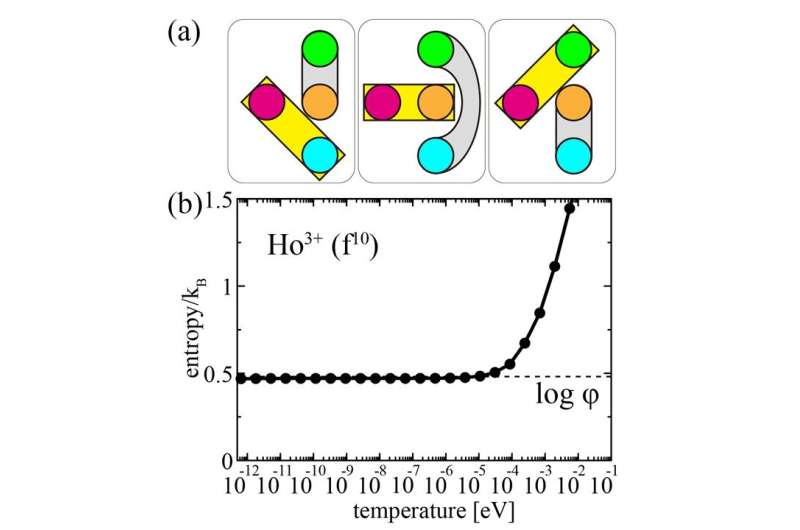Three-channel Kondo effect discovered in cubic holmium compound

A scientist from Tokyo Metropolitan University has applied numerical methods to capture the hallmarks of a quantum phenomenon known as the three-channel Kondo effect in an f-electron system for the first time. Professor Takashi Hotta showed how electrons around a holmium +3 ion interact with conduction electrons and give rise to a predicted residual entropy value at ultra-low temperatures. The work also predicts the kind of real materials which might show this effect.
One of the many mysteries facing condensed matter physicists in the 20th century was the curious case of the resistivity of impure metals. Electrical resistance in metals is largely caused by conduction electrons being scattered off metal ions undergoing vibrations due to thermal energy. The lower the temperature, the less the vibration, and the weaker the effect; one would expect the resistivity of metals to simply drop off as they approach absolute zero. However, this is not what happens when the metal is not pure. As the temperature is lowered, the resistivity hits a minimum before picking up again. This effect is known as the Kondo effect after Prof. Jun Kondo, who realized it was due to magnetic impurities interacting with conduction electrons through a process known as hybridization.
After numerous breakthroughs in the 1960s and 1970s, physicists began to realize that this was only the beginning. The ways in which the impurity and conduction electrons interact could in fact be more complex, particularly when the same impurity could interact with multiple reservoirs of electrons, a "multi-channel" Kondo effect. Pioneering work by Nozières and Blandin in 1980 showed how the two-channel Kondo effect gave rise to "non-Fermi liquid" behavior. Non-Fermi liquids have, amongst other things, been linked to high temperature superconductivity.
Now, Professor Takashi Hotta of Tokyo Metropolitan University has looked at a three-channel Kondo effect in a numerical model of a cubic holmium compound. In the case of holmium 3+ ions, their highest energy electrons are in 4f orbitals, a subset of the many quantum states which may be occupied by pairs of electrons around an atom. Six fill lower energy states while four combine in different ways to produce what is known as a spin singlet and a spin triplet; these are shown in the diagram, where the rectangle is the triplet, the oval is the singlet, and the differently colored circles denote the four electrons. Together, these create a "spin = 1" impurity which could then hybridize with three different sources of conduction electron at once. Using an algorithm known as the numerical renormalization group method to model this system, Prof. Hotta found a residual entropy at ultra-low temperature with the exact value predicted by the three-channel Kondo effect.
Importantly, this new work gives predictions for real materials where the three-channel Kondo effect might be spotted, 1-2-20 compounds made of 1 part holmium, 2 parts transition metal, and 20 parts aluminum or zinc. Indicators of real experimental systems where the effect might be seen promises to breathe new excitement into the search for exotic quantum ground states, with scope for the discovery of novel non-Fermi liquids and their potential applications.
More information: Takashi Hotta, Three-Channel Kondo Effect Emerging from Ho Ions, Journal of the Physical Society of Japan (2021). DOI: 10.7566/JPSJ.90.113701
Provided by Tokyo Metropolitan University




















